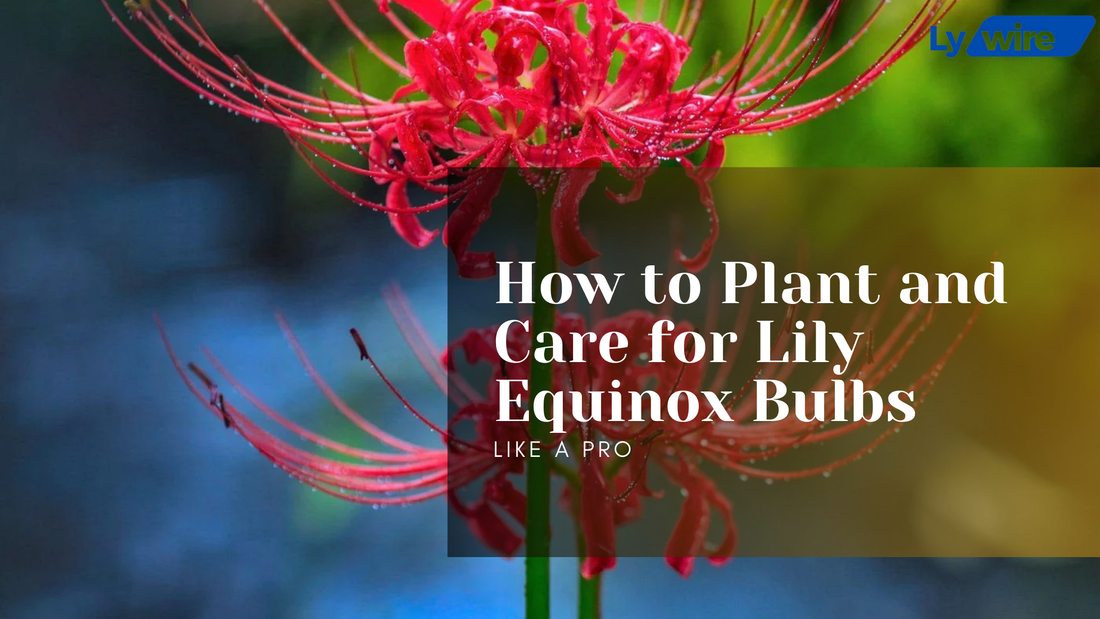
Lily Equinox bulbs are a stunning addition to any garden, offering vibrant blooms that captivate the eye. Whether you're a seasoned gardener or a beginner, planting and caring for these bulbs can be a rewarding experience. This guide will walk you through the steps to plant and nurture Lily Equinox bulbs like a pro.
Why Choose Lily Equinox Bulbs?
Lily Equinox bulbs are known for their striking beauty and adaptability. They thrive in various climates and soil conditions, making them an excellent choice for gardeners of all skill levels. Their blooms are not only visually appealing but also attract pollinators like bees and butterflies, enhancing the biodiversity of your garden.

When to Plant Lily Equinox Bulbs
Timing is crucial when planting Lily Equinox bulbs. These bulbs can be planted in both spring and fall, depending on your region:
- Spring Planting: Ideal for regions with harsh winters. Plant as soon as the ground is workable.
- Fall Planting: Best for areas with mild winters. Plant 4-6 weeks before the first frost.
Step-by-Step Guide to Planting Lily Equinox Bulbs
1. Select the Right Location
Lily Equinox thrives in areas with:
- Full Sunlight: At least 6 hours of direct sunlight daily.
- Well-Draining Soil: Avoid waterlogged areas to prevent bulb rot.
2. Prepare the Soil
- Loosen the soil to a depth of 12 inches.
- Mix in organic compost to enrich the soil and improve drainage.
3. Dig the Holes
- Dig holes 3 times as deep as the height of the bulb (approximately 6-8 inches).
- Space bulbs 8-12 inches apart to allow room for growth.
4. Position the Bulbs
- Place each bulb with the pointed end facing upward.
- Ensure roots are spread out at the bottom of the hole.
5. Cover and Water
- Backfill with soil, gently pressing down to remove air pockets.
- Water thoroughly to settle the soil around the bulbs.

Caring for Lily Equinox Bulbs
Proper care ensures healthy growth and vibrant blooms. Follow these tips:
1. Watering
- Keep soil evenly moist during the growing season.
- Reduce watering during dormancy to prevent rot.
2. Mulching
- Apply a layer of mulch to retain moisture and regulate soil temperature.
- Use organic materials like bark or straw.
3. Fertilizing
- Apply a balanced fertilizer (10-10-10) in early spring.
- Reapply after blooming to strengthen the bulbs for next season.
4. Staking
Tall varieties may require staking to support their stems. Use garden stakes or bamboo canes, tying stems loosely with soft ties.

Common Issues and Solutions
1. Pest Control
Pests like aphids and slugs can damage your lilies:
- Use insecticidal soap or neem oil for aphids.
- Set up slug traps or apply diatomaceous earth around plants.
2. Disease Prevention
Overwatering can lead to fungal diseases like botrytis:
- Ensure proper spacing for air circulation.
- Remove infected leaves promptly.
Tips for Maximizing Blooms
- Deadhead spent flowers to encourage new blooms.
- Divide overcrowded clumps every 3-4 years to maintain vigor.
- Rotate planting locations annually to prevent soil depletion.
Growing Lily Equinox Bulbs in Pots
If you have limited space, consider growing your bulbs in pots:
- Choose a pot at least 12 inches deep with drainage holes.
- Use a mix of potting soil and horticultural grit for drainage.
- Follow planting steps as outlined above, ensuring proper spacing between bulbs.
Seasonal Maintenance
Spring
- Fertilize as shoots emerge.
- Water regularly but avoid waterlogging.
Summer
- Deadhead flowers after blooming.
- Continue watering and fertilizing until foliage yellows.
Fall
- Cut back yellowed foliage to ground level.
- Add mulch for winter protection in colder regions.
Why Lily Equinox Bulbs Are Perfect for Your Garden
Lily Equinox bulbs are versatile, low-maintenance, and offer stunning blooms that transform any garden into a floral paradise. By following these planting and care tips, you'll enjoy vibrant lilies year after year, making your garden the envy of neighbors and visitors alike.
Start planting today, and watch your garden come alive with the beauty of Lily Equinox!

